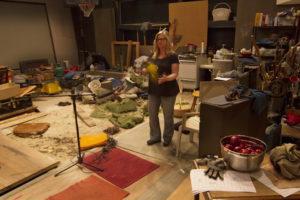- in Engineering , Production , Video by Bobby Owsinski
The Magic Of Foley
 Most people (even many audio engineers) don’t realize that the sound effects that they hear in a movie aren’t real. They’re recreated to sound more dramatic or “more real” than they actually sound. That’s the job of the Foley artist, and there aren’t many of them, even in Hollywood.
Most people (even many audio engineers) don’t realize that the sound effects that they hear in a movie aren’t real. They’re recreated to sound more dramatic or “more real” than they actually sound. That’s the job of the Foley artist, and there aren’t many of them, even in Hollywood.
The process is named after Jack Foley, who started working at Universal Pictures back in 1914 in the era of silent films. When the first picture with sound was being made, the producers realized that the microphones weren’t picking up much beyond the dialog and the movie sound needed help if it was going to be another close to realistic. The call went out around the lot for anyone who had previously worked on radio, where live sound effects were part of many of the broadcasts. Foley stepped up and used what he already knew, and discovered many new tricks for adding sound effects to movies along the way. Most of his methods are still used today.
What’s interesting about the following video (from the Great Big Story network’s Frontiers series) is the everyday objects that are used by Warner Bros. Foley artists Alyson Moore and Chris Moriana.
I’m lucky in that I live close to most of the big Hollywood studios (I can walk down the block to 2 of them, with 2 others a bike ride away), so I’ve been in Foley stages numerous times over the years. They always strike me as someone’s messy garage, yet everything is there for a reason. This video is only the tip of the iceberg of how Foley works.
[photo: Warner Bros Sound]
